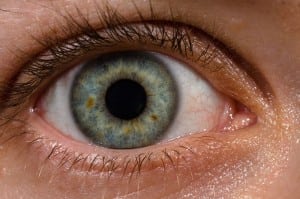
A new study has linked sleep disorders to natural yellowing pigmentation of eye lenses that absorb the blue spectrum. The study that was conducted in Denmark was published with the results in the issuance of Sleep on 1st September. The study also linked the sleep disorders to ageing on the ground that the discolouration or the yellowing of lenses increases with age.
According to the lead author of the study, Mr. Line Kessel, explained that the link established between sleep disorders and natural pigmentation of eyes found in the study explains why more aged people suffer from sleep disorders than youth.
In the research, 970 volunteers underwent eye examination by autofluorometry, which is a non-intrusive technique in ophthalmology and is implemented for the determination of amount of blue spectrum the retina receives. It is notable that blue spectrum is one of the seven spectra of the normally visible light and influences the cycle of sleep by releasing melatonin inside the human brains. Melatonin is the hormone that signals whether to be alert or sleepy. Of the participated volunteers, those who claimed to have insomnia and those who had taken prescribed drugs for sleep disorder in the last 1 year were classified as sufferers of sleep issues. 82.8% of those volunteers who were classified as sufferers revealed that they suffer from insomnia and have used medication for sleep disorders.
The data collected during the study helped researchers establish an inverse proportionality between ageing or yellowing of eyes and the chances of sleep issues. It was found that lower the reception of blue spectrum by the lenses greater the chances of suffering from sleep disturbances. Thus, yellowing of lenses due to ageing may be relatively less significant towards visual functions; it is likely to cause insomnia among elderly.
Though the study was an initiative in ophthalmology, it illuminated other aspects too. For instances, sleep disorder was reported more by older volunteers, smokers, women and patients of diabetes mellitus. This further established the revelations of previous studies that the ageing of lens is accelerated among smokers, diabetics and those with greater chances of suffering from ischemic heart disorders. These factors were addressed by the researchers from Denmark in statistical analyses. However, the link between sleep disorders and reception of blue spectrum by the lens remained considerable even in cases of volunteers other than those described. It means that this relation remains steady across sexes, ages, habits and diseases.
Another crucial factor that came to fore in this ophthalmology study is that the quality of sleep has been found to have improved in cataract sufferers after the cataract surgery. It signifies that those who are prescribed with medication for insomnia and have gone cataract surgery after prescription should consult ophthalmologist for reduction of dose or discontinuation of prescription. It is unfortunate news for many but there is no other way to improve reception of blue spectrum by the lenses but surgery. The researchers have revealed that they are involved in another project in which they are trying to extract the yellowish film from the lens by non-intrusive method of special laser treatment. However, the procedure is still under development and not yet ready for clinical use.
